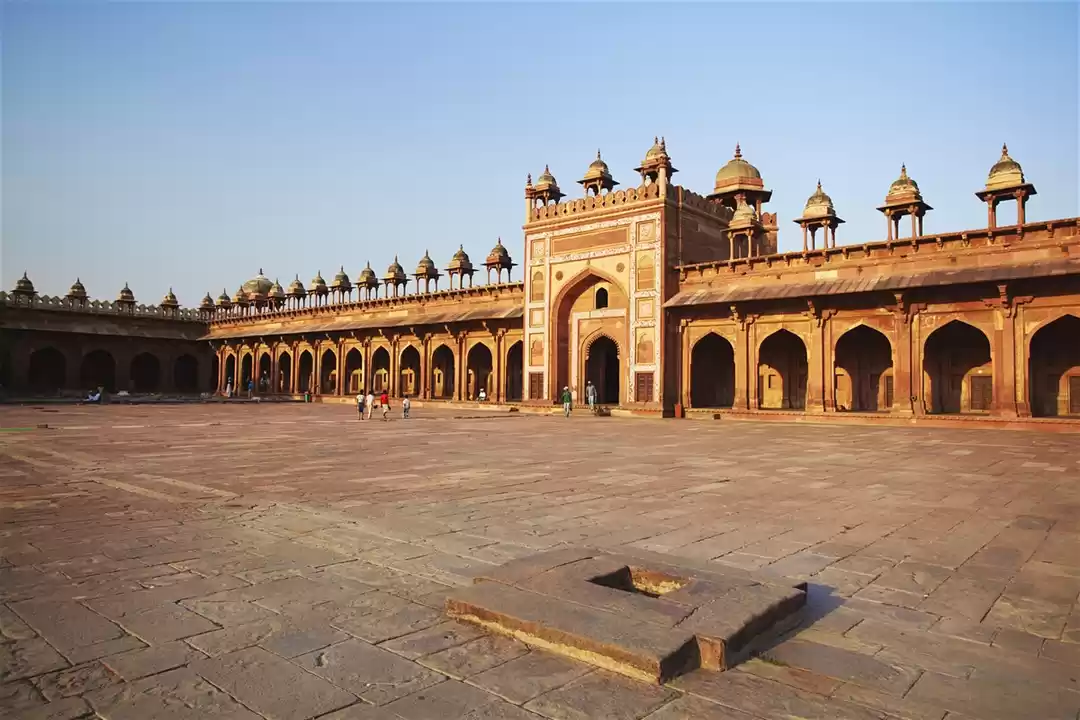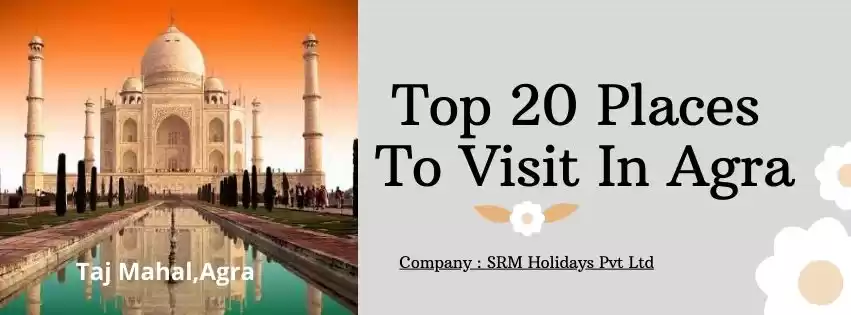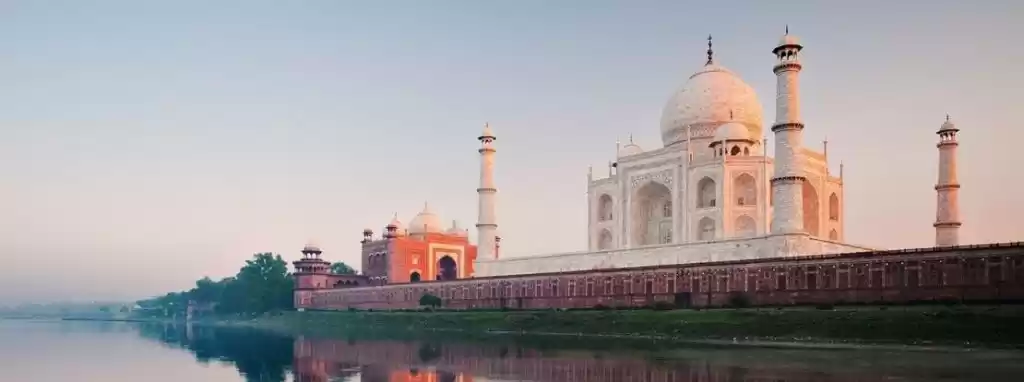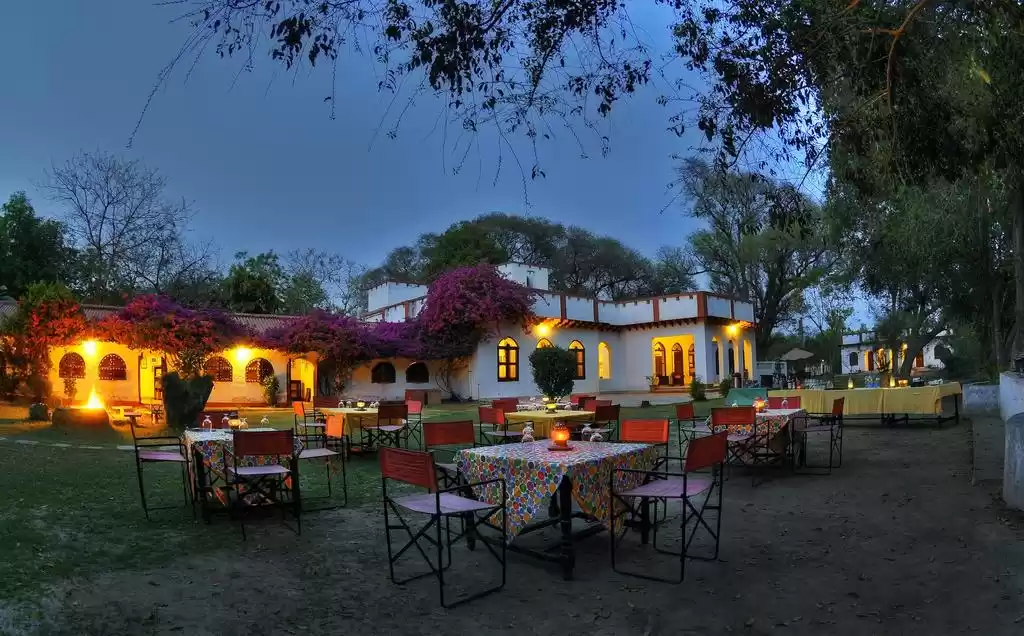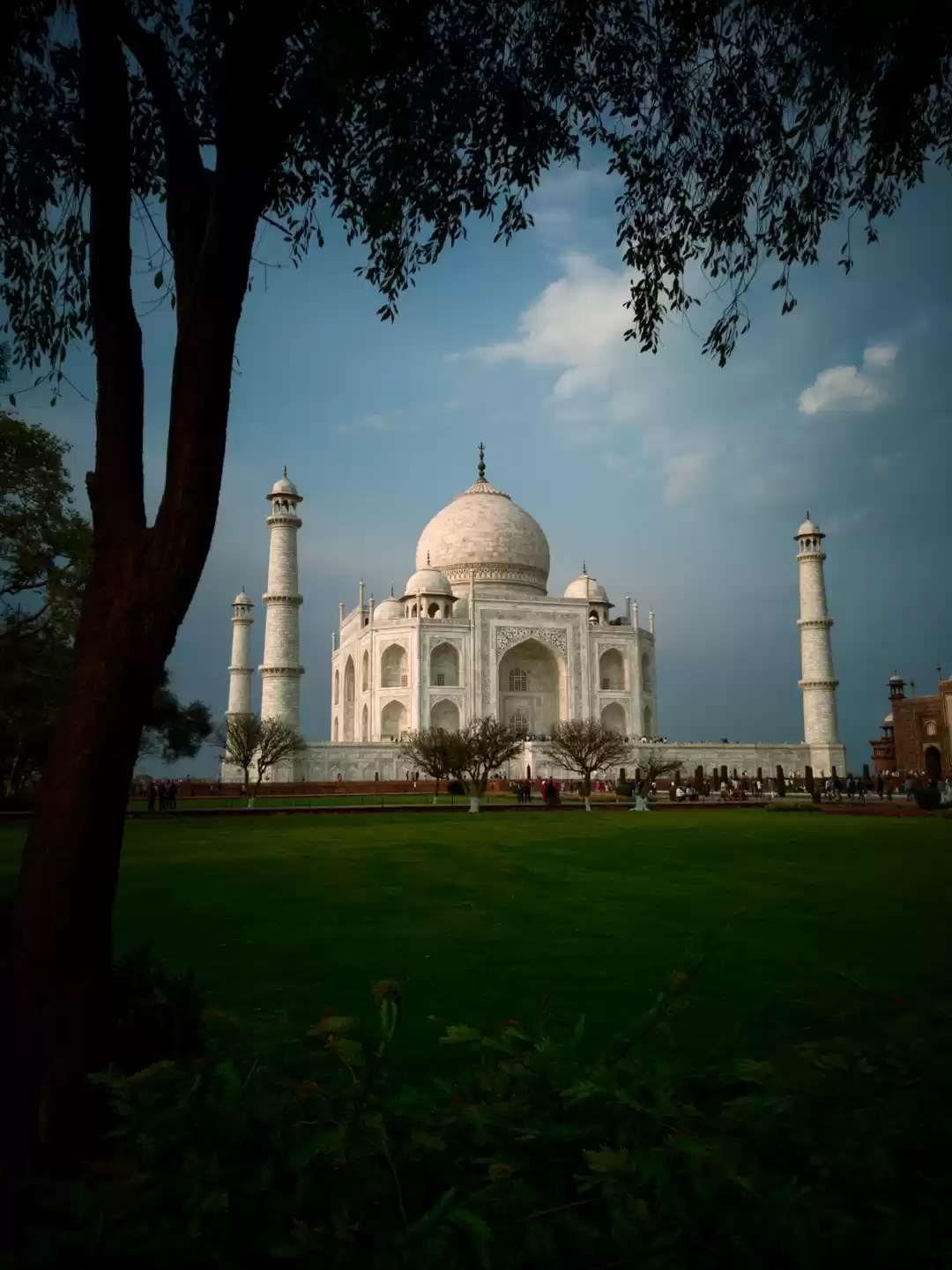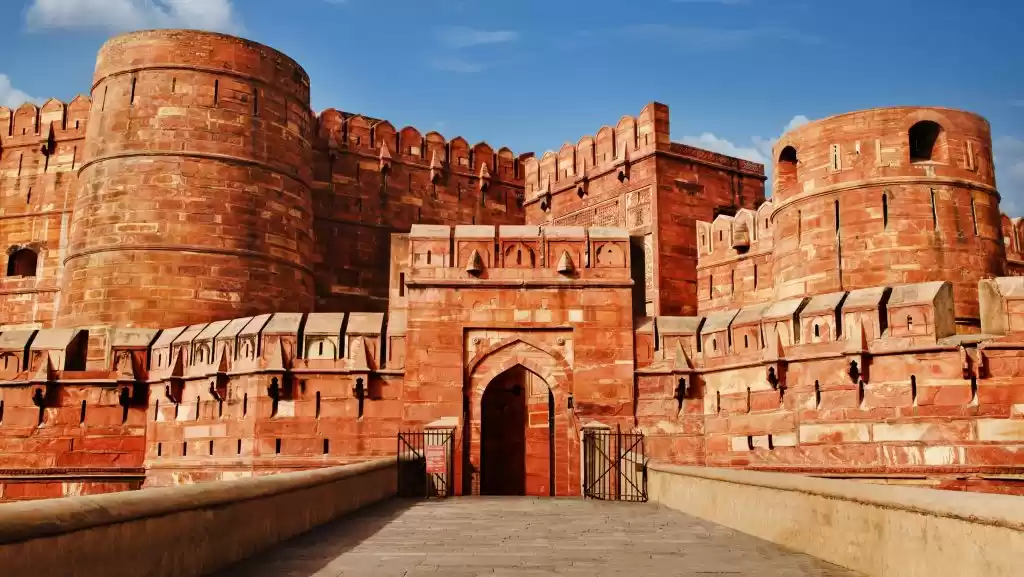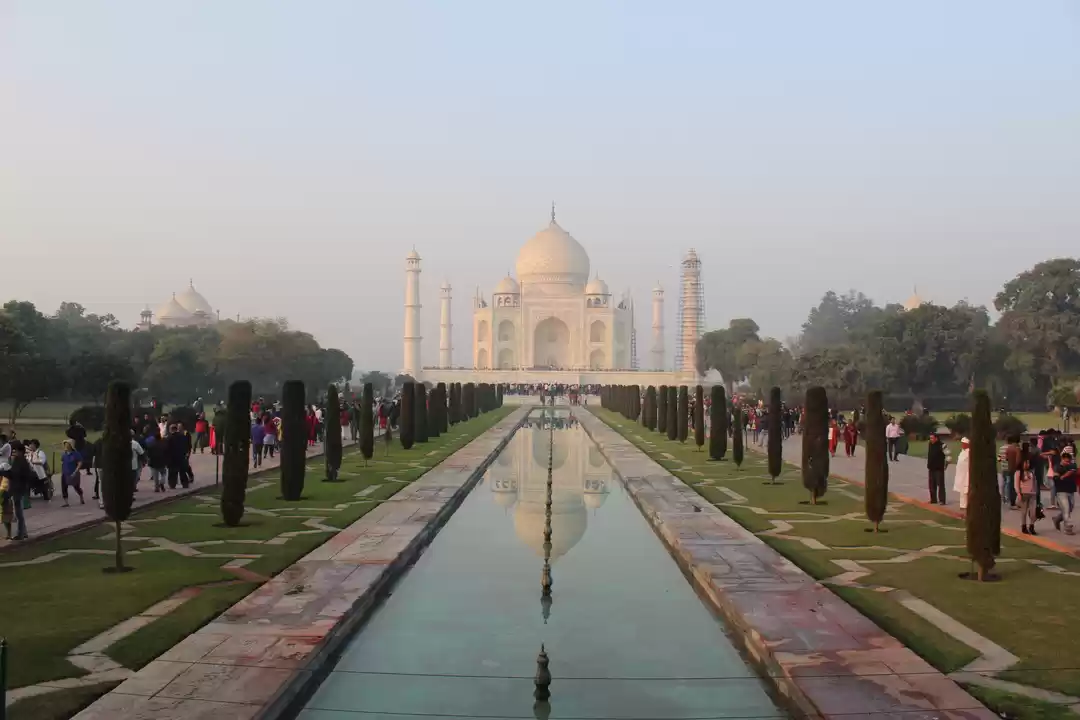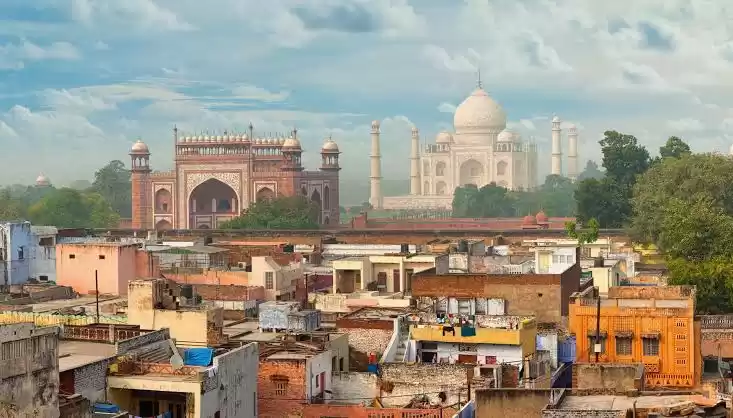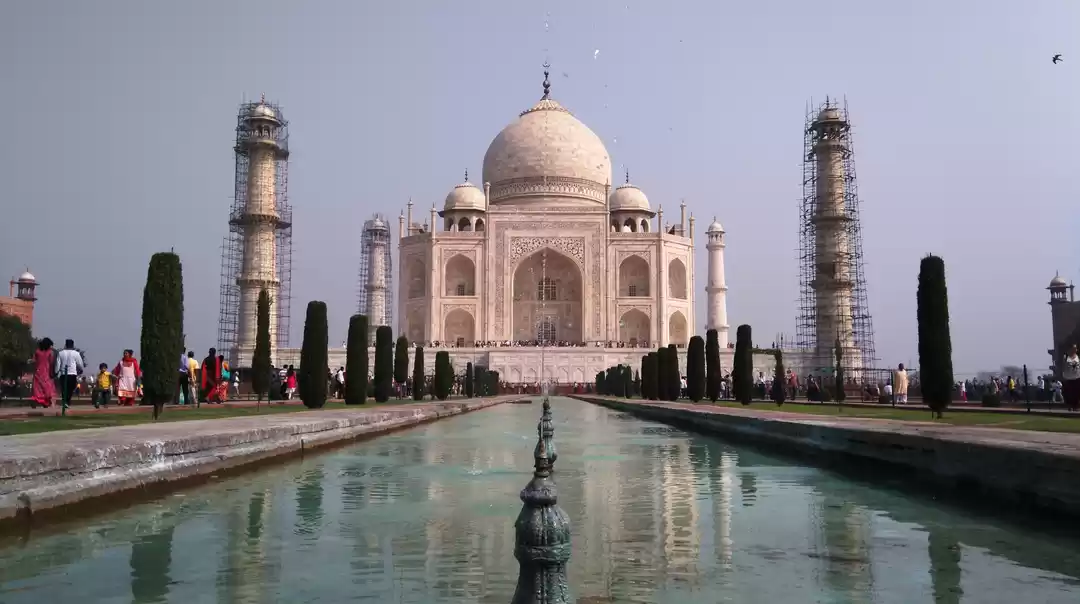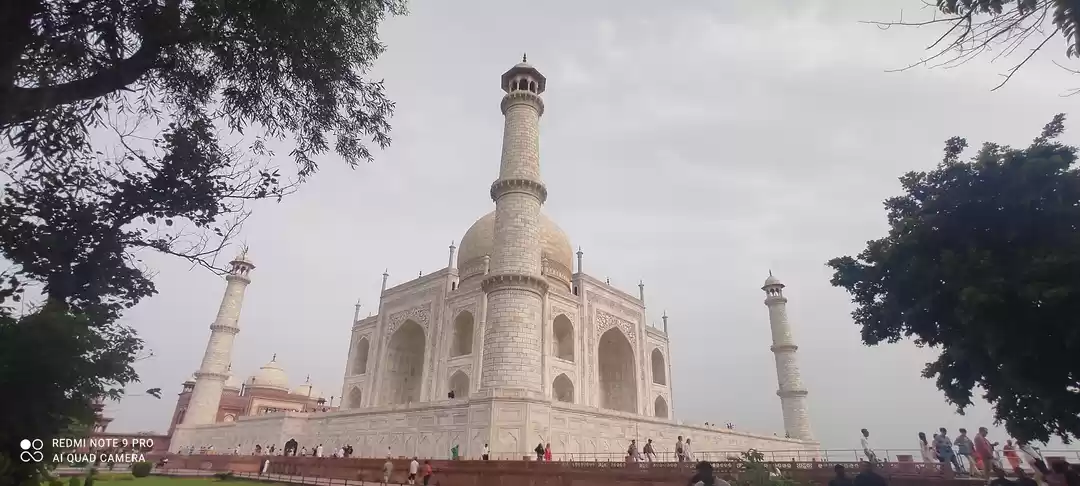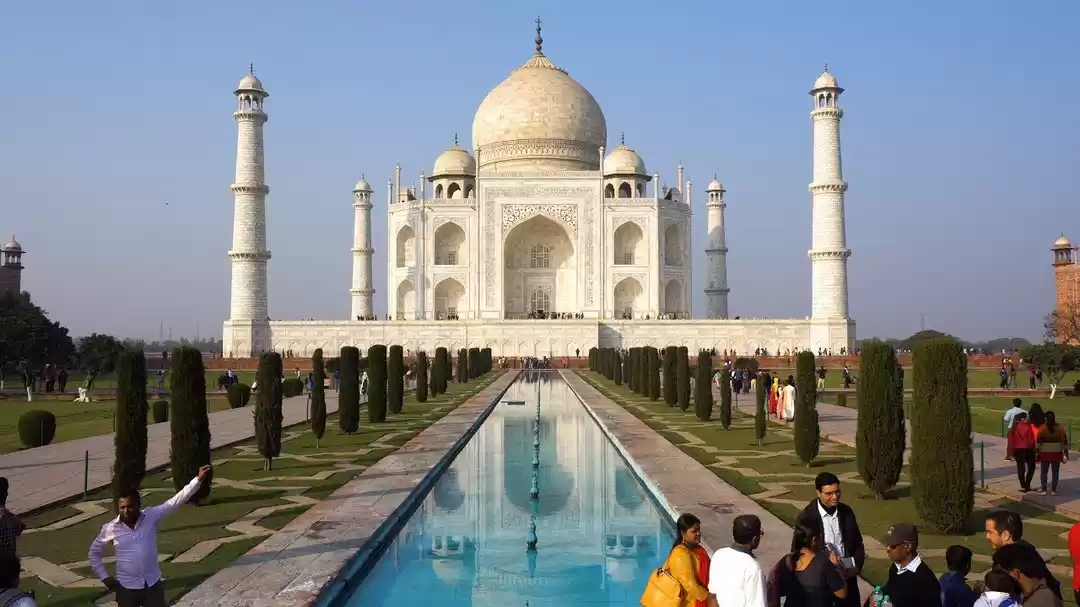1. Agra Fort
Built by Mughal emperor Akbar in 1565 AD, Agra Fort is a majestic sandstone built as an ode to the magnificence of the Mughal empire.
The Department of Tourism, Government of Uttar Pradesh has initiated a sound and light show at Agra Fort that not only provides a peek of the fortress' glorious history but is also a visual treat. Agra Fort is also known as the 'Lal Qila', 'Fort Rouge' or 'Qila-i-Akbari' and is an unmissable site in the city.

2. Bateshwar:
Bateshwar is a temple town located 70 km away from the city of Agra, and situated on the banks of River Yamuna.
Bateshwar is also famous for its annual cattle fair, which has been held here for over 400 years. With varying dates every year, the fair is meant to coincide with the most auspicious period for praying in the town, and is an important destination for saints, traders as well as local villagers.
From camels, oxen, goats and horses to locally made furniture, spices and traditional cooking utensils, it has a lot to offer besides a truly authentic experience of rural Indian life in the region.
One of the largest fairs of its kind in north India, it is spread over three weeks and draws thousands of tourists every year.

3. Chambal Wildlife Sanctuary:
Located near Agra in Etawah, along the banks of River Chambal, the Chambal Wildlife Sanctuary is a natural haven that is home to a vast variety of flora and fauna.
Also read: sirsa, dolphin the water world agra
River Chambal originates in the Vidhya ranges in Madhya Pradesh and finally meets River Yamuna in Etawah.
Chambal Wildlife Sanctuary is also ideal for birdwatching, and boasts over 290 species of resident as well as migratory aquatic and terrestrial birds. Some of the best times in a year to visit the sanctuary, in fact, are determined by the presence of flamingos – from November to May, the area hosts them, while in September you’ll find the rudy shelduck arriving here.
Of the resident birds, the Indian skimmers thrive here in vast colonies.
4. Chini-Ka-Rauza:
Chini-ka-Rauza is believed to be the first structure in India to have been embellished extensively using glazed porcelain tiles, and is regarded by many as a significant landmark in Indo-Persian architecture.
The most striking feature of the structure is said to have been the tomb, which is now in ruins. Originally, it was round, very similar to the style of Afghani tombs.

5. Fatehpur Sikri:
Mughal emperor Akbar built his capital at Fatehpur Sikri between 1572 and 1585 AD. It was constructed using red sandstone.
Built on a stony ridge, Fatehpur Sikri lies richly enveloped in local folklore. One story goes that long before Akbar made it his capital, Mughal emperor Babur had named the city ‘shukri’ (thanks) as a gesture of acknowledgement to the local residents who had helped him win the Battle of Khanwa, in 1527, against Rana Sanga, a Rajput ruler from Mewar.
His grandson, emperor Akbar, built the Buland Darwaza many years later after capturing Gujarat, and gave the city its current name.

6. Firozabad:
Located at a distance of about 47 km from Agra is Firozabad, also known as the glass city of India and the city of bangles.
Built by Tughlaq king, Feroz Shah Tughlaq, it is renowned for its glass bangles and other glass products.

7. Mehtab Bagh:
This beautiful garden is located on the western banks of River Yamuna and stands in perfect alignment with the gardens of the Taj Mahal located across the river. Spread across 300 sq m, Mehtab Bagh has been the site of several intriguing excavations.
Local lore holds that it was the last in a series of 11 pleasure gardens built by Mughal emperor Babur by the riverbank. Today, it stands as a delightful vantage point from where to view and photograph the marble wonder that is Taj.
The view from the entrance gate is particularly beautiful and should not be missed.

8. Ram Bagh, Agra:
A Mughal garden believed to have been designed by emperor Babur and later renovated by his great-granddaughter-in-law empress Nur Jahan, Ram Bagh is said to be the oldest Mughal garden in the country.
The concept of pleasure gardens among the Mughals, it is said, relates to the notion of creating an image of paradise on earth.
Fountains and pavilions lie on either side of the main water channel, and the entire garden is enclosed by walls, with corner towers topped by pillared pavilions. Ram Bagh is open from sunrise to sunset.

9. Sikandra;
The mausoleum of Mughal emperor Akbar, Sikandra is a red sandstone and marble tomb built by the emperor himself, and finished by his son, Jehangir, in 1613.
Akbar is believed to have selected the site of the tomb during his lifetime and planned the structure himself.

10. Soor Sarovar Bird Sanctuary:
Situated on the Delhi-Agra highway, Keetham Lake is about 20 km by road from Agra.
A serene body of water surrounded by lush green and enveloped in peaceful silence punctuated only by the calls of birds, this is an ideal picnic spot.
The Uttar Pradesh Forest Department has also developed shallow areas and woodlands around the lake for waders that makes it even more comfortable for birds to nest here.
Some birds that can be spotted here include egrets, purple herons, comb ducks and spoonbills.

11. Taj Mahal:
Mughal emperor Shah Jahan, the creator of the Taj Mahal, said that the beauty of the monument made “the sun and the moon shed tears from their eyes”.
It has also been described as a “teardrop on the cheek of eternity” by Nobel laureate Rabindranath Tagore. Every year, thousands of tourists from around the world make a beeline for this breathtakingly ethereal marble monument, considerd by many as the most beautiful building constructed by man.
The monument was built as a memorial by Mughal emperor Shah Jahan for his deceased wife, Mumtaz Mahal. It is one of the seven wonders of the world and is a monument of pride for not just Agra but also India.
















